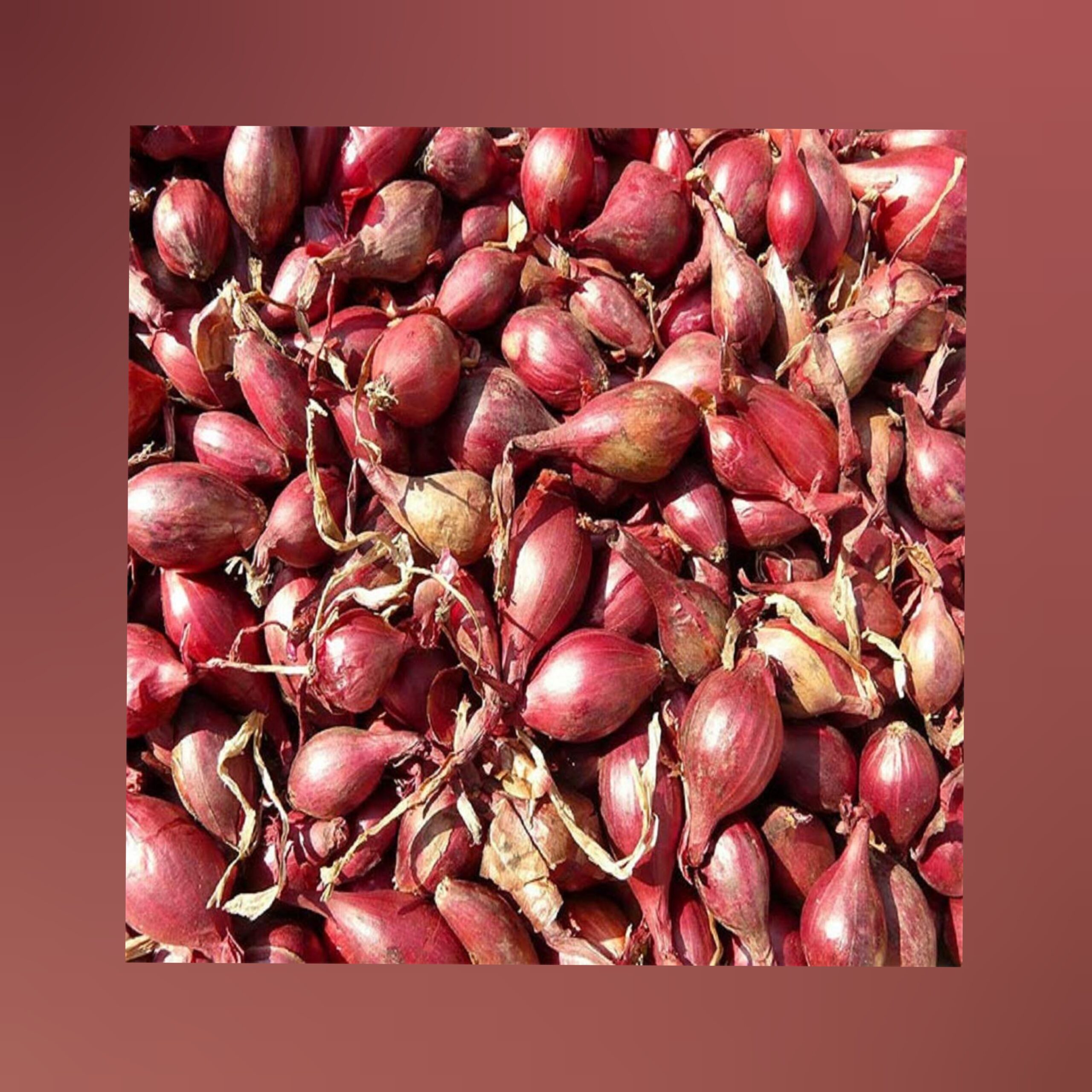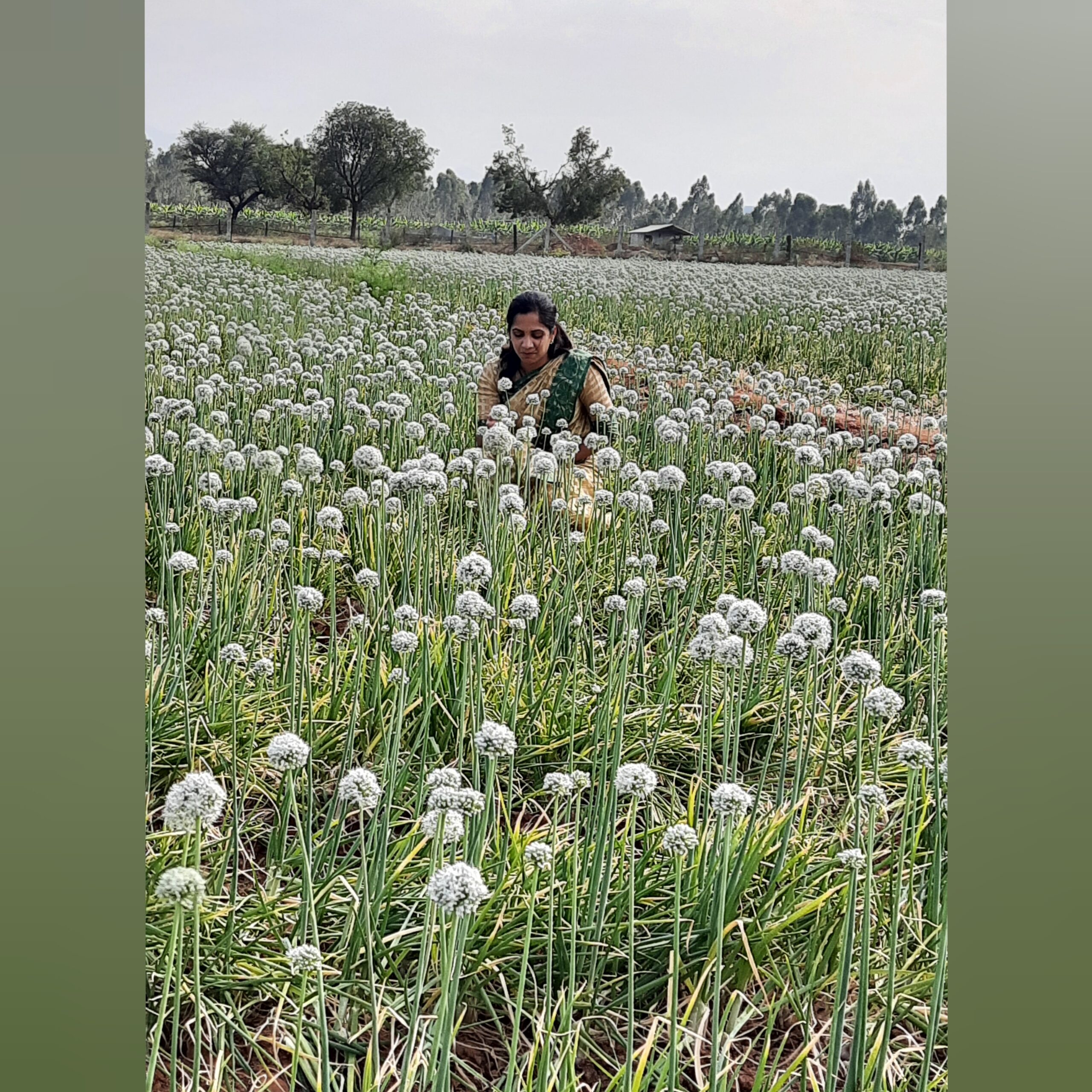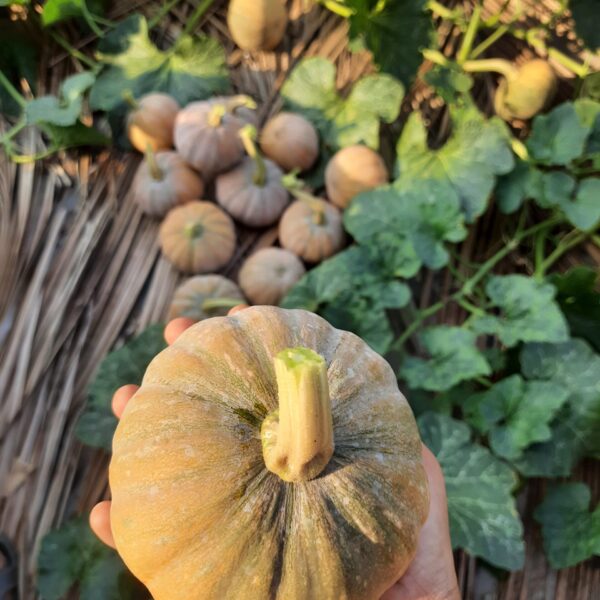Native Sambar Small Onion Seeds
How to Grow Sambar Onion Organically from Seeds: A Step-by-Step Guide
Sambar onions, known for their small size, sweet flavor, and high nutritional value, are a popular variety in South Indian cuisine. These onions are typically used to make sambar, a traditional lentil-based stew, and other flavorful dishes. If you’re looking to grow Sambar onions organically, this step-by-step guide will show you how to successfully cultivate them from seeds in your garden.
Why Choose Organic Sambar Onions?
Growing Sambar onions organically means you’ll be cultivating them without synthetic pesticides or chemical fertilizers, making them healthier for you, your family, and the environment. Organic Sambar onions are naturally sweeter and more nutrient-rich, and growing them yourself ensures the freshest, most flavorful produce for your meals.
Benefits of Organic Sambar Onions:
- Rich in Nutrients: High in antioxidants, vitamins, and minerals, organic onions promote heart health and digestive wellness.
- Great Culinary Use: Their sweet flavor makes them ideal for preparing curries, chutneys, and, of course, the famous sambar.
- Pest-Free Growing: Organic methods protect beneficial insects and pollinators, promoting a healthier garden ecosystem.
Step-by-Step Guide to Growing Organic Sambar Onions from Seeds
1. Choose the Right Location
Sambar onions thrive in full sunlight, so select a sunny location in your garden that receives at least 6–8 hours of direct sunlight each day. They also prefer well-draining soil that is rich in organic matter.
- Soil: Sambar onions prefer slightly acidic to neutral soil with a pH level between 6.0 and 7.0. Loamy soil enriched with organic compost will provide the best growing conditions.
- Temperature: Onions grow best in moderate to warm temperatures, around 20–30°C (68–86°F). Avoid planting them during extreme cold or hot seasons.
2. Prepare the Soil
- Soil Preparation: Start by loosening the soil to a depth of 6–8 inches. Sambar onions have shallow root systems, so soil that is light, loose, and well-draining will encourage good growth.
- Organic Matter: Add well-rotted compost or organic manure to the soil to enhance its fertility and ensure proper drainage. This provides the necessary nutrients for the onions to grow vigorously without synthetic fertilizers.
3. Plant the Sambar Onion Seeds
- Direct Seeding: In early spring (after the last frost), sow Native Sambar Small Onion Seeds directly into the soil. Space the Native Sambar Small Onion Seeds about 1–2 inches apart. After sowing, cover them with a thin layer of soil.
- Indoor Seeding: If you want to get a head start, plant seeds indoors 6–8 weeks before the last expected frost. Use seed trays or pots filled with organic potting mix. Once the seedlings are strong enough, transplant them outdoors.
4. Watering and Care
- Watering: Keep the soil consistently moist but not waterlogged. Water your onions regularly to prevent the soil from drying out, but be careful not to over-water, as onions are prone to rot in excessively wet soil.
- Mulching: Apply a layer of organic mulch around the plants to retain moisture, keep the soil temperature consistent, and suppress weeds.
5. Thin and Space the Plants
As the Sambar onion seedlings grow, thin them out to 4–6 inches apart to allow ample space for bulb development. Thin out the weaker plants to encourage stronger growth in the remaining ones. Proper spacing also helps improve air circulation, preventing disease and rot.
6. Fertilizing (Organically)
- Organic Fertilizers: If necessary, apply an organic liquid fertilizer like fish emulsion or compost tea during the growing season to boost plant growth.
- Avoid Over-Fertilizing: Sambar onions don’t require heavy fertilization. Using compost or manure should be enough for healthy, organic growth.
7. Pest and Disease Management
- Natural Pest Control: Sambar onions are generally resilient to pests. However, you may occasionally encounter aphids, thrips, or onion maggots. Use organic pest control methods like neem oil, garlic spray, or diatomaceous earth to protect your plants.
- Preventing Diseases: To avoid fungal infections, ensure proper drainage and avoid over-watering. Regularly inspect your plants for signs of disease and remove any affected leaves.
8. Harvesting Sambar Onions
- Harvesting Time: Sambar onions are typically ready for harvest in about 3–4 months. You’ll know they’re ready when the tops begin to fall over and turn yellow, and the bulbs feel firm to the touch.
- Harvesting Process: Gently pull the onions from the soil, taking care not to damage the bulbs. After harvesting, allow the onions to dry in a cool, shaded area for about 1–2 weeks until they are fully cured.
9. Storing the Harvest
Once your Sambar onions are fully dried, store them in a cool, dry, well-ventilated place. For long-term storage, you can braid the onion stems together and hang them, or store them in mesh bags. Properly cured and stored onions can last several months. Native Sambar Small Onion Seeds
Why Buy Organic Sambar Onion Seeds?
Our organic Sambar onion seeds are carefully selected for their high germination rates and excellent flavor. These seeds are grown without the use of synthetic chemicals or fertilizers, ensuring that you’re getting the healthiest, most nutritious onions for your garden. By growing Sambar onions organically, you’re contributing to a healthier environment and a more sustainable food system.
Key Benefits of Organic Sambar Onion Seeds:
- 100% Organic and Chemical-Free: Grown without harmful pesticides or synthetic fertilizers, ensuring a safer, healthier harvest.
- Rich Flavor and Nutrition: Enjoy the naturally sweet, mild flavor of Sambar onions, which are packed with essential vitamins and antioxidants.
- High Germination Rate: Our seeds are carefully chosen for their excellent germination potential, ensuring strong, healthy plants in your garden.
- Ideal for Indian Cuisine: Perfect for use in sambar, curries, chutneys, and other traditional dishes.
Order Now: Start Growing Organic Sambar Onions in Your Garden!
Ready to grow your own organic Sambar onions? These flavorful, nutrient-rich onions are perfect for anyone who enjoys homegrown produce, especially in traditional South Indian recipes. With our organic Sambar onion seeds, you can cultivate these flavorful onions right in your backyard and enjoy their natural, sweet taste year-round.
Order your organic Sambar onion seeds today and start your journey toward a healthier, more sustainable garden!
Native Sambar Small Onion Seeds
| Weight | 15 g |
|---|










Reviews
There are no reviews yet.